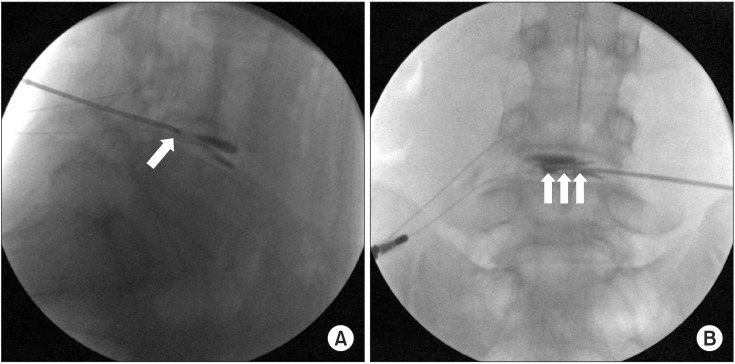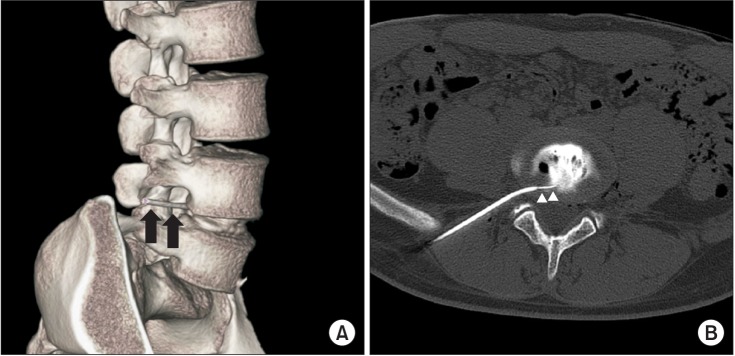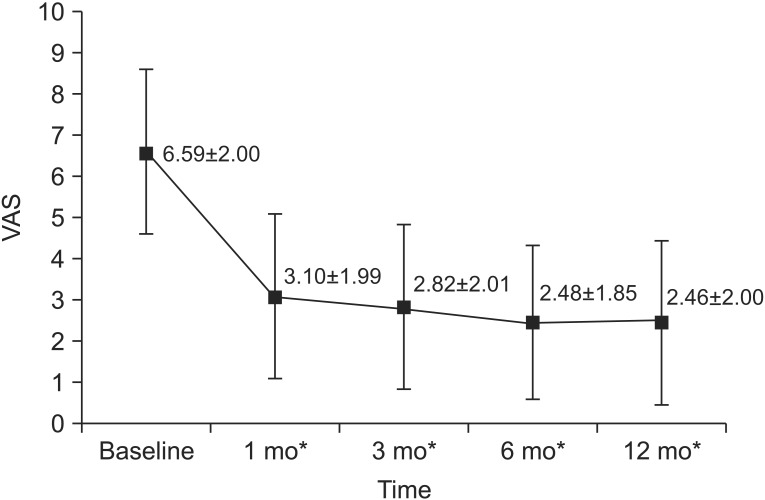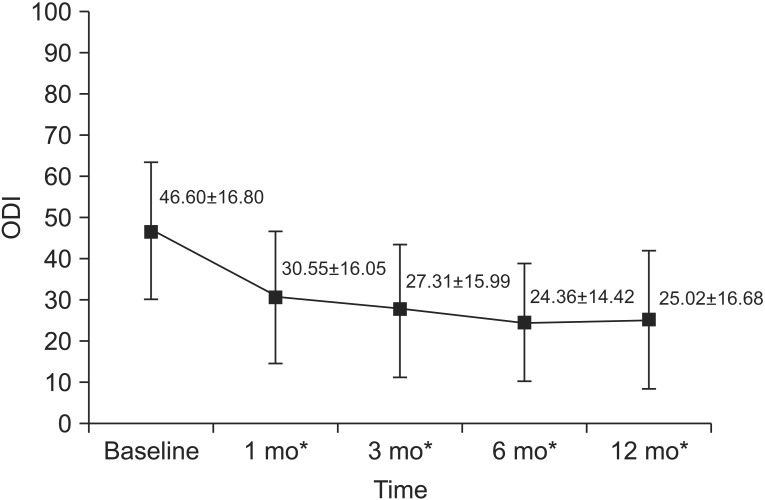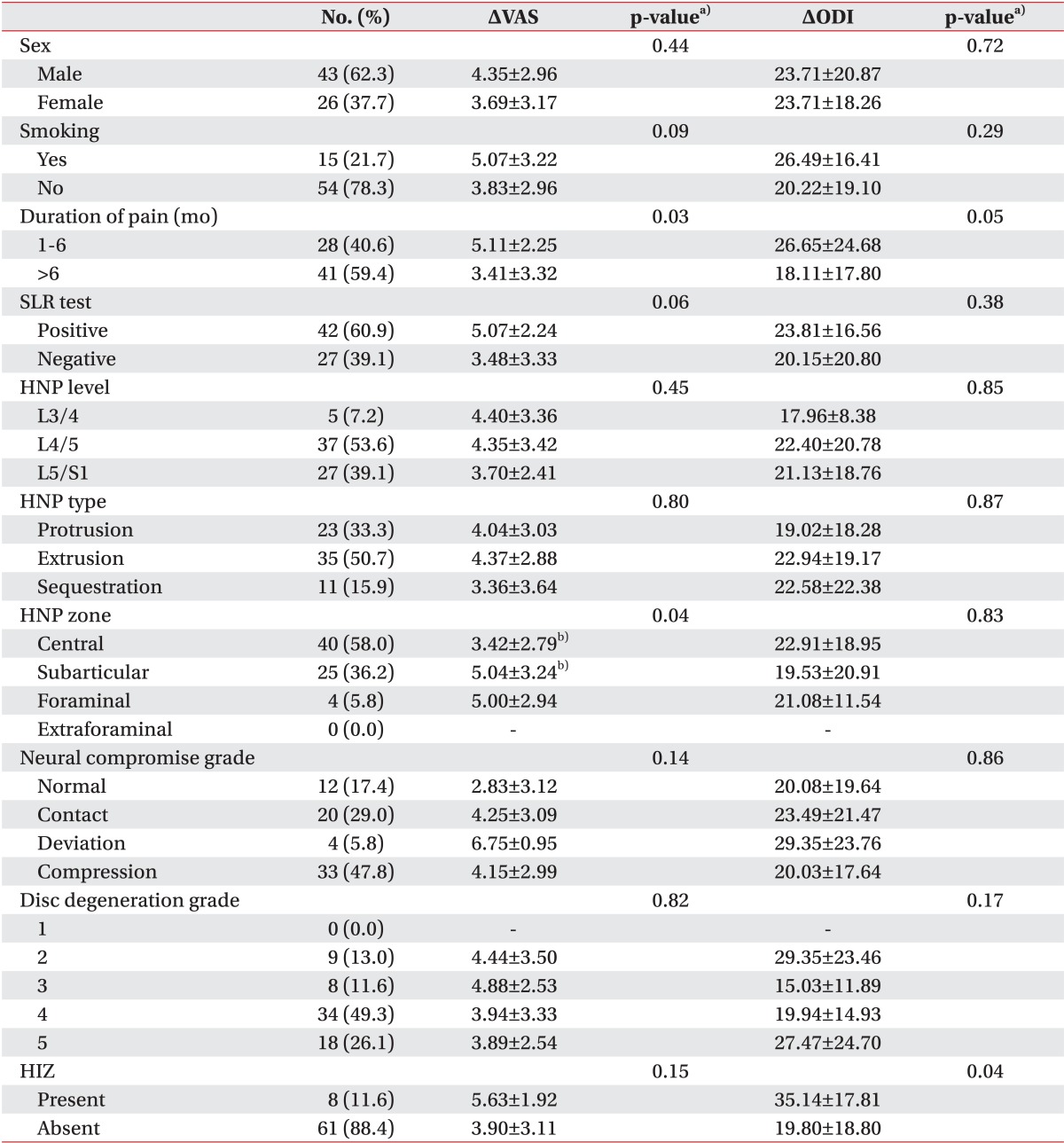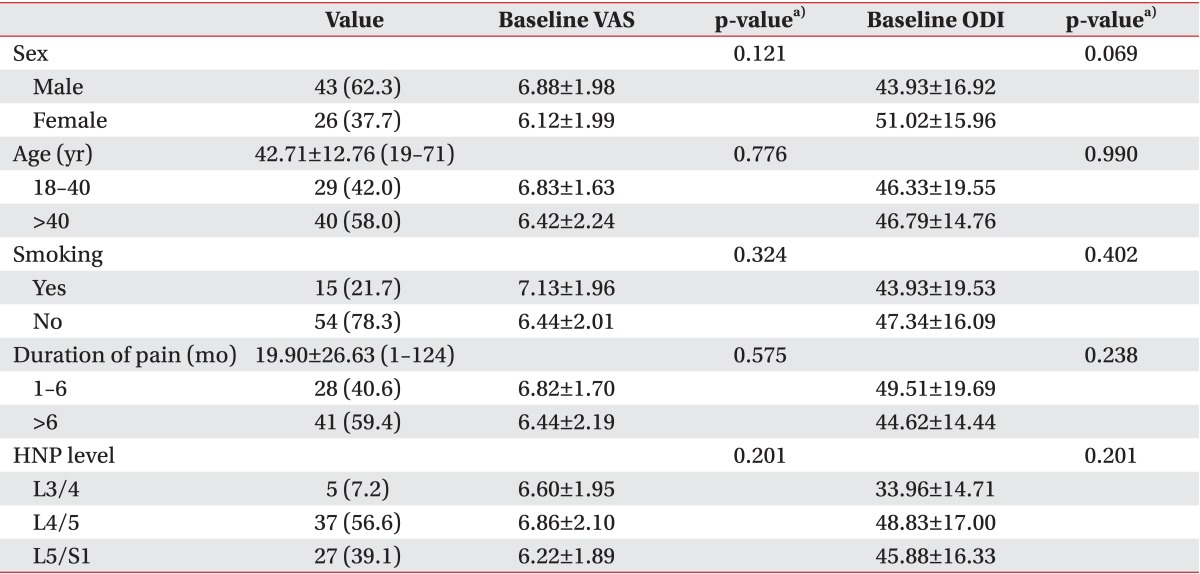1. Ong D, Chua NH, Vissers K. Percutaneous disc decompression for lumbar radicular pain: a review article. Pain Pract 2014;10 29 [Epub]. PMID:
10.1111/papr.12250.

2. Kuslich SD, Ulstrom CL, Michael CJ. The tissue origin of low back pain and sciatica: a report of pain response to tissue stimulation during operations on the lumbar spine using local anesthesia. Orthop Clin North Am 1991;22:181-187. PMID:
1826546.
3. Dewing CB, Provencher MT, Riffenburgh RH, Kerr S, Manos RE. The outcomes of lumbar microdiscectomy in a young, active population: correlation by herniation type and level. Spine (Phila Pa 1976) 2008;33:33-38. PMID:
18165746.


4. Brouwer PA, Brand R, van den Akker-van Marle ME, Jacobs WC, Schenk B, van den Berg-Huijsmans AA, et al. Percutaneous laser disc decompression versus conventional microdiscectomy in sciatica: a randomized controlled trial. Spine J 2015;15:857-865. PMID:
25614151.


5. Singh V, Piryani C, Liao K, Nieschulz S. Percutaneous disc decompression using coblation (nucleoplasty) in the treatment of chronic discogenic pain. Pain Physician 2002;5:250-259. PMID:
16902650.

6. Lee SH, Derby R, Sul DG, Hong JW, Kim GH, Kang S, et al. Efficacy of a new navigable percutaneous disc decompression device (L'DISQ) in patients with herniated nucleus pulposus related to radicular pain. Pain Med 2011;12:370-376. PMID:
21332936.



7. Gerszten PC, Smuck M, Rathmell JP, Simopoulos TT, Bhagia SM, Mocek CK, et al. Plasma disc decompression compared with fluoroscopy-guided transforaminal epidural steroid injections for symptomatic contained lumbar disc herniation: a prospective, randomized, controlled trial. J Neurosurg Spine 2010;12:357-371. PMID:
20201654.


8. Karaman H, Tufek A, Olmez Kavak G, Yildirim ZB, Temel V, Celik F, et al. Effectiveness of nucleoplasty applied for chronic radicular pain. Med Sci Monit 2011;17:CR461-CR466. PMID:
21804466.


9. Charnley J. Orthopaedic signs in the diagnosis of disc protrusion: with special reference to the straight-leg-raising test. Lancet 1951;1:186-192. PMID:
14795816.


10. Fardon DF, Milette PC. Combined Task Forces of the North American Spine Society. American Society of Spine Radiology. American Society of Neuroradiology. Nomenclature and classification of lumbar disc pathology. Recommendations of the Combined task Forces of the North American Spine Society, American Society of Spine Radiology, and American Society of Neuroradiology. Spine (Phila Pa 1976) 2001;26:E93-E113. PMID:
11242399.


11. Pfirrmann CW, Dora C, Schmid MR, Zanetti M, Hodler J, Boos N. MR image-based grading of lumbar nerve root compromise due to disk herniation: reliability study with surgical correlation. Radiology 2004;230:583-588. PMID:
14699183.


12. Pfirrmann CW, Metzdorf A, Zanetti M, Hodler J, Boos N. Magnetic resonance classification of lumbar intervertebral disc degeneration. Spine (Phila Pa 1976) 2001;26:1873-1878. PMID:
11568697.


13. Aprill C, Bogduk N. High-intensity zone: a diagnostic sign of painful lumbar disc on magnetic resonance imaging. Br J Radiol 1992;65:361-369. PMID:
1535257.


14. Derby R, Lee SH, Kim BJ. Discography. In: Slipman CS, editor. Interventional spine: an algorithmic approach. Philadelphia: Saunders; 2008. p.291-302.
15. Herkowitz HN, Garfin SR, Eismont FJ, Bell GR, Balderston RA. Rothman-Simeone the spine. 6th ed. Philadelphia: Elsevier Health Sciences; 2011.
16. Splendiani A, Puglielli E, De Amicis R, Barile A, Masciocchi C, Gallucci M. Spontaneous resolution of lumbar disk herniation: predictive signs for prognostic evaluation. Neuroradiology 2004;46:916-922. PMID:
15609071.


17. Erginousakis D, Filippiadis DK, Malagari A, Kostakos A, Brountzos E, Kelekis NL, et al. Comparative prospective randomized study comparing conservative treatment and percutaneous disk decompression for treatment of intervertebral disk herniation. Radiology 2011;260:487-493. PMID:
21613439.


18. Bokov A, Skorodumov A, Isrelov A, Stupak Y, Kukarin A. Differential treatment of nerve root compression pain caused by lumbar disc herniation applying nucleoplasty. Pain Physician 2010;13:469-480. PMID:
20859316.


19. Woolf CJ, Doubell TP. The pathophysiology of chronic pain: increased sensitivity to low threshold Aβ-fibre inputs. Curr Opin Neurobiol 1994;4:525-534. PMID:
7812141.


20. Jonsson B, Stromqvist B. Significance of a persistent positive straight leg raising test after lumbar disc surgery. J Neurosurg 1999;91(1 Suppl): 50-53. PMID:
10419368.


21. Knop-Jergas BM, Zucherman JF, Hsu KY, DeLong B. Anatomic position of a herniated nucleus pulposus predicts the outcome of lumbar discectomy. J Spinal Disord 1996;9:246-250. PMID:
8854281.


22. Kim SY, Lee IS, Kim BR, Lim JH, Lee J, Koh SE, et al. Magnetic resonance findings of acute severe lower back pain. Ann Rehabil Med 2012;36:47-54. PMID:
22506235.



23. Kang CH, Kim YH, Lee SH, Derby R, Kim JH, Chung KB, et al. Can magnetic resonance imaging accurately predict concordant pain provocation during provocative disc injection? Skeletal Radiol 2009;38:877-885. PMID:
19430778.


